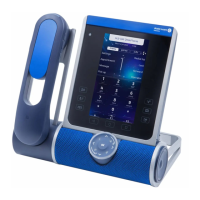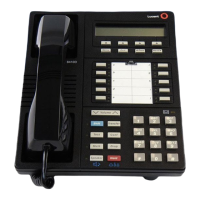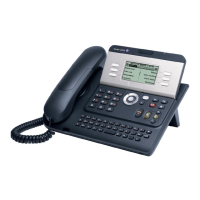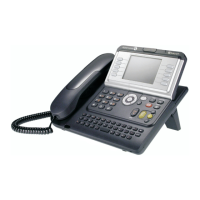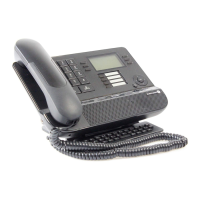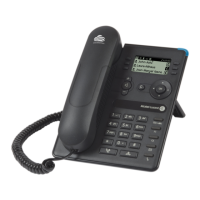7.10.4 Automatic Gain Control (AGC)
Automatic Gain Control (AGC) is applicable to the hands-free operation and is used to keep audio output at
nearly a constant level by adjusting the gain of signals in some circumstances. This increases the effective
user-phone radius and helps with the intelligibility of soft-talkers.
7.10.5 Voice Activity Detection (VAD)
VAD can avoid unnecessary coding or transmission of silence packets in VoIP applications, saving on
computation and network bandwidth.
The following table lists the parameter you can use to configure VAD.
Note: X means account ID. It can be number 1~8 for M3/M5/M7, 1-20 for M8.
7.10.6 Comfort Noise Generation (CNG)
Comfort Noise Generation (CNG) is used to generate background noise for voice communications during
periods of silence in a conversation.
7.10.7 Jitter Buffer
The ALE Myriad Series phones support fixed type of jitter buffers. A fixed jitter buffer with corresponding
fixed delay to voice packets.
7.11 DTMF
DTMF (Dual Tone Multi-frequency) tone better known as touch tone. DTMF is the signal sent from the IP
phone to the network, which is generated when pressing the IP phone’s keypad during a call. Each key
pressed on the IP phone generates one sinusoidal tone of two frequencies. One is generated from a high-
frequency group and the other from a low-frequency group.
Five methods of transmitting DTMF digits on SIP calls:
• RFC 2833 - DTMF digits are transmitted by RTP Events compliant with RFC 2833. You can
configure the payload type and sending times of the end RTP Event packet. The RTP Event packet
contains 4 bytes. The 4 bytes are distributed over several fields denoted as Event, End bit, R-bit,
Volume and Duration. If the End bit is set to 1, the packet contains the end of the DTMF event. You
can configure the sending times of the end RTP Event packet.
• RFC 4733 - The RCF 4744 is optimized based on RFC 2833 framework, it specifically differs from
RFC 2833 by removing the requirement that all compliant implementations support the DTMF
events. Instead, compliant implementations taking part in out-of-band negotiations of media stream
content indicate what events they support. it adds three new procedures to the RFC 2833
framework: subdivision of long events into segments, reporting of multiple events in a single packet,
and the concept and reporting of state events.
• INBAND - DTMF digits are transmitted in the voice band. It uses the same codec as your voice and
is audible to conversation partners.
• SIP INFO - DTMF digits are transmitted by SIP INFO messages. DTMF digits are transmitted by the
SIP INFO messages when the voice stream is established after a successful SIP 200 OK-ACK
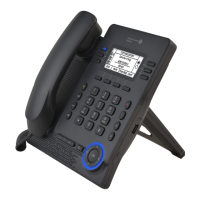
